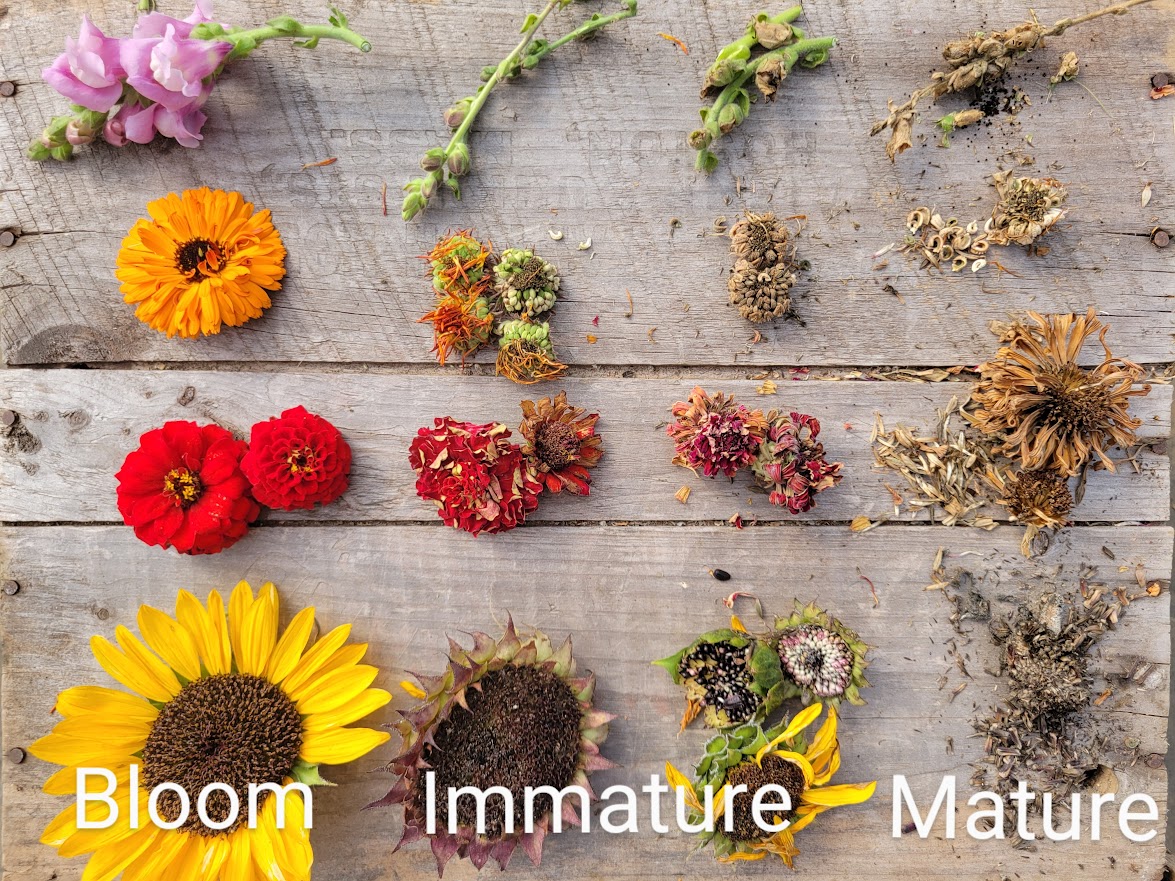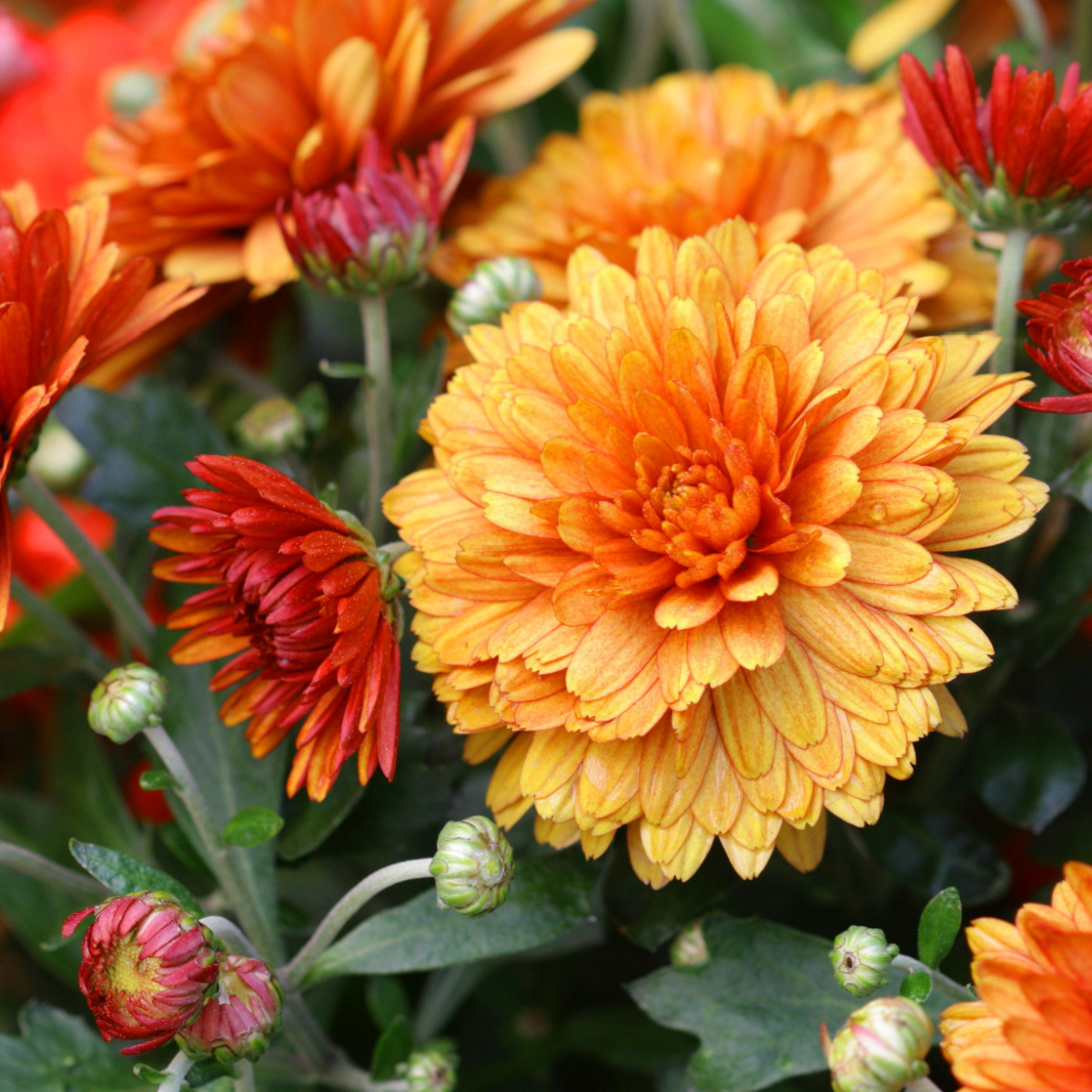If you love growing beautiful chrysanthemums, collecting your own seeds is a simple way to keep your garden blooming year after year. But do you know the best time and method to gather these tiny treasures?
Getting it right means healthy plants and vibrant flowers next season. You’ll discover easy steps to collect chrysanthemum seeds like a pro, saving you money and giving you the satisfaction of growing your garden from start to finish. Ready to learn how?
Let’s dive in!

Credit: www.youtube.com
Choosing The Right Chrysanthemum
Choosing the right chrysanthemum is key to collecting good seeds. Healthy plants give strong seeds. Seeds from poor plants may not grow well. Picking the best plant makes your gardening easier.
Focus on plants with bright flowers and green leaves. Avoid plants with spots or holes on leaves. Strong plants resist disease and pests better. This means better chances for successful seeds.
Selecting Healthy Plants
Look for chrysanthemums with no signs of disease. Leaves should be green and firm. Flowers should be fully open and bright. Avoid plants with wilted or yellow leaves. Choose plants that stand tall and sturdy.
Check for pests like aphids or mites. Avoid plants with sticky residue or webbing. Healthy plants produce better quality seeds. This helps your next crop grow strong and healthy.
Timing For Seed Collection
Wait until flower petals start to dry and fall off. Seeds are ready when seed heads turn brown. Collect seeds before they fall to the ground. Dry seed heads on the plant for best results.
Harvest seeds in the morning on a dry day. Avoid collecting seeds when wet or rainy. Proper timing ensures seeds are mature and dry. This improves seed storage and germination rates.

Credit: www.almanac.com
Preparing For Seed Harvest
Preparing for seed harvest is an important step in collecting chrysanthemum seeds. It helps ensure a good seed yield and healthy plants next season. Taking time to gather the right tools and identify mature seed heads makes the process easier and more effective.
Tools And Materials Needed
Gather small scissors or garden shears for cutting seed heads. Use paper bags or envelopes to store the seeds safely. Have labels and a marker to note the seed type and date. A clean workspace helps keep seeds free from dirt. A shallow tray or bowl can catch seeds during collection.
Identifying Mature Seed Heads
Look for seed heads that are dry and brown. The petals usually fall off by this stage. Seeds should feel hard, not soft or green. Avoid harvesting if seed heads are still green or moist. Check several seed heads to find the best ones for collection.
Harvesting Chrysanthemum Seeds
Harvesting chrysanthemum seeds is an important step for growing new plants. You can save seeds from healthy flowers to grow next season. Seeds must be collected at the right time. This ensures good germination and strong plants.
Seeds are ready when the flower petals start to dry and fall off. The seed heads look dry and brown. Collect seeds before they scatter in the wind. This helps keep seeds safe and usable.
Step-by-step Seed Collection
First, choose healthy chrysanthemum flowers with dry seed heads. Use clean scissors or garden shears to cut the seed heads. Place the cut heads in a paper bag or container. Avoid plastic bags to prevent moisture build-up.
Next, let the seed heads dry completely in a warm, dry place. After drying, gently crush the seed heads to release the seeds. Separate the seeds from the flower debris by hand or use a sieve. Store the clean seeds in a labeled envelope or jar.
Handling Seeds Carefully
Handle chrysanthemum seeds gently to avoid damage. Keep seeds dry to prevent mold and rot. Store seeds in a cool, dark place for best results. Avoid exposing seeds to direct sunlight or heat.
Check seeds regularly for signs of moisture or pests. Use seeds within one year for better growth. Proper care helps keep seeds healthy and ready to plant.
Cleaning And Drying Seeds
Cleaning and drying chrysanthemum seeds is a key step for healthy plant growth. Proper seed care helps keep seeds safe from mold and pests. It also prepares seeds for storage or planting.
Removing Debris
Start by picking out small leaves, stems, and flower parts. Use your fingers or a fine mesh sieve. Gently shake seeds to separate dirt and other bits. Clean seeds look brighter and are easier to dry.
Remove any damaged or broken seeds too. These seeds may not grow well. Clean seeds improve your chance of success in the garden.
Proper Drying Techniques
Spread seeds in a thin layer on paper towels or a screen. Place them in a dry, warm spot away from direct sun. Good air flow speeds drying and stops mold growth. Stir seeds gently every day to dry evenly.
Check seeds after a week. They should feel dry and hard. Properly dried seeds store longer and sprout better. Avoid damp or humid places for drying.
Storing Seeds For Future Use
Storing chrysanthemum seeds properly keeps them healthy and ready for planting. Seeds lose their ability to grow if stored poorly. Good storage extends their life and ensures strong plants next season.
Choosing Storage Containers
Select containers that keep seeds dry and safe from pests. Small glass jars with tight lids work well. Paper envelopes or zip-lock bags are also good choices. Avoid containers that let air or moisture in. Label each container with the seed type and date.
Ideal Storage Conditions
Seeds last longest in cool, dark places. A temperature between 32°F and 41°F (0°C to 5°C) is best. Keep seeds away from sunlight and heat sources. A refrigerator is a great spot for seed storage. Check seeds regularly for mold or damage. Dry seeds store better than damp ones. Use silica gel packets to absorb moisture inside containers.
Planting Your Collected Seeds
Planting your collected chrysanthemum seeds is an exciting step. It lets you grow beautiful flowers from your own garden. Proper planting helps the seeds grow strong and healthy. Follow simple steps for the best results.
Preparing The Soil
Choose a spot with good sunlight. Chrysanthemums need at least six hours of sun daily. The soil should be loose and well-drained. Remove stones, weeds, and old roots. Mix compost or organic matter into the soil. This improves nutrients and drainage. Avoid heavy clay soil, which holds too much water. A slightly acidic to neutral pH is best for chrysanthemums.
Sowing And Germination Tips
Sow the seeds on the soil surface. Lightly press them into the soil but do not cover deeply. Chrysanthemum seeds need light to sprout. Water gently to keep the soil moist, not wet. Use a spray bottle for gentle watering. Keep the soil temperature around 65-70°F (18-21°C). Germination usually takes 7 to 14 days. Thin seedlings once they grow to avoid overcrowding. This helps strong plants develop.
Troubleshooting Common Issues
Collecting chrysanthemum seeds can be rewarding but sometimes challenging. Problems like low germination or mold can stop your success. Knowing how to fix these issues helps you grow healthy plants. This section covers common problems and simple solutions to keep your seed collection strong.
Dealing With Low Germination
Low germination means fewer seeds sprout. Check if seeds are fresh and fully ripe. Old seeds often fail to grow. Store seeds in a cool, dry place to keep them healthy. Plant seeds at the right depth, usually about 1/8 inch deep. Keep soil moist but not wet. Too much water can cause seeds to rot. Light helps many chrysanthemum seeds sprout, so provide gentle sunlight or use a grow light.
Preventing Mold And Pests
Mold grows in damp, crowded conditions. Avoid planting seeds too close together. Use well-draining soil to stop water buildup. Airflow is important; place seedlings where air moves freely. Check seeds and soil daily for mold signs. Remove any moldy seeds immediately. Pests like aphids may attack seedlings. Use natural sprays or handpick pests gently. Keep your seed area clean to reduce pest risks.

Credit: oldworldgardenfarms.com
Frequently Asked Questions
How Do I Know When Chrysanthemum Seeds Are Ready?
Chrysanthemum seeds are ready when seed heads turn brown and dry. Wait for the flower heads to fully dry on the plant before harvesting seeds.
What Is The Best Way To Collect Chrysanthemum Seeds?
Cut dry seed heads carefully and place them in a paper bag. Gently crush the heads to release seeds, then store them in a cool, dry place.
Can I Collect Seeds From Any Chrysanthemum Variety?
Yes, you can collect seeds from most chrysanthemum varieties. However, hybrid varieties may not produce true-to-type seeds, so results may vary.
How Do I Store Chrysanthemum Seeds Properly?
Store seeds in a labeled, airtight container. Keep them in a cool, dark, and dry environment to maintain seed viability for up to two years.
Conclusion
Collecting chrysanthemum seeds is simple and rewarding. Wait until the flower dries completely. Gently pull apart the seed heads. Store seeds in a cool, dry place. Label each seed packet clearly. Plant seeds in spring for best growth. Watch your garden bloom with new chrysanthemums.
Enjoy the process and the beauty it brings. Try collecting seeds every year for variety. Gardening can be fun and relaxing. Start your seed collection today!

